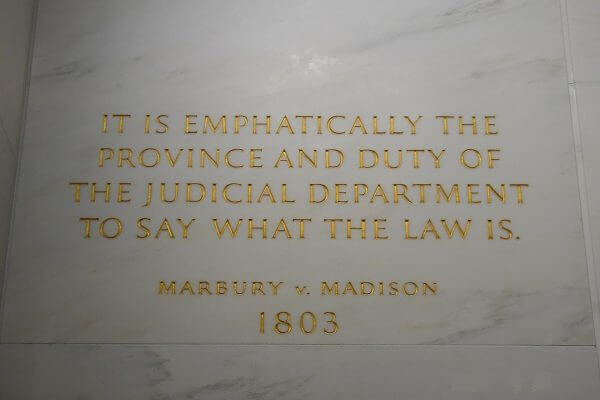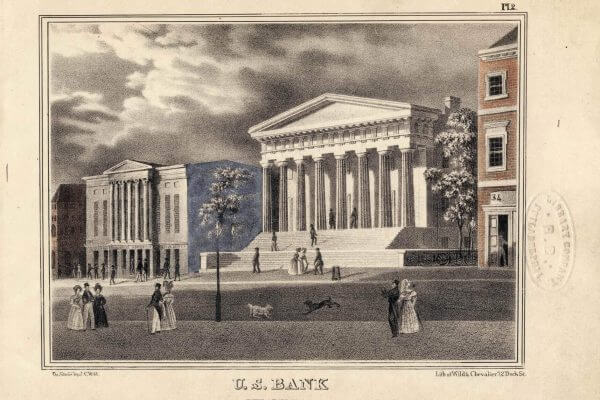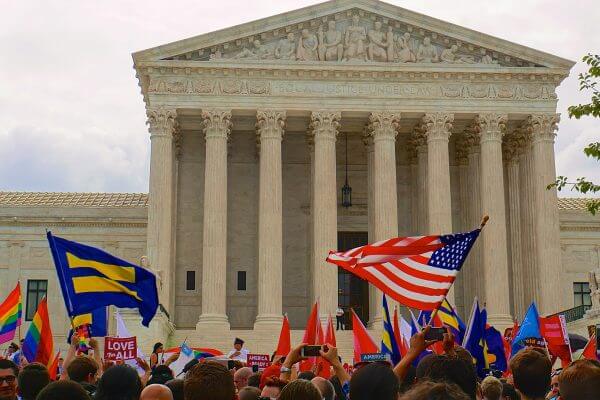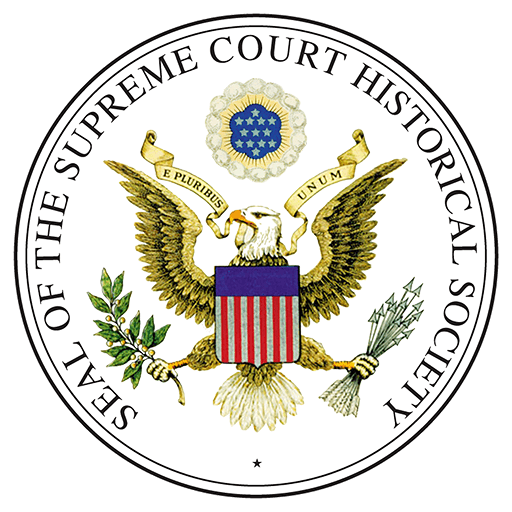
Gibbons v. Ogden (1824)
Federal Government has Power Over Interstate Commerce
Engraving of Federal Troops Landing on the Kentucky Shore, Opposite Cairo, for the Purpose of Building Fort Holt, Civil War Engraving from "Famous Leaders and Battle Scenes of the Civil War," Published in 1864
Overview
In 1808, the government of New York granted a steamboat company a monopoly to operate its boats on the state’s waters, which included bodies of water that stretched between states. Aaron Ogden held a license under this monopoly to operate steamboats between New Jersey and New York. Thomas Gibbons, another steamboat operator, competed with Aaron Ogden on this same route but held a federal coasting license issued by an act of Congress. Ogden filed a complaint in New York court to stop Gibbons from operating his boats, claiming that the monopoly granted by New York was legal even though he operated on shared, interstate waters. Gibbons disagreed arguing that the U.S. Constitution gave Congress the sole power over interstate commerce. After losing twice in New York courts, Gibbons appealed the case to the U.S. Supreme Court. The Supreme Court determined that the Commerce Clause of the Constitution grants the federal government the power to determine how interstate commerce is conducted.

Engraving of Federal Troops Landing on the Kentucky Shore, Opposite Cairo, for the Purpose of Building Fort Holt, Civil War Engraving from "Famous Leaders and Battle Scenes of the Civil War," Published in 1864
"Few things were better known, than the immediate causes which led to the adoption of the present constitution ... that the prevailing motive was to regulate commerce; to rescue it from the embarrassing and destructive consequences, resulting from the legislation of so many different States, and to place it under the protection of a uniform law."
- Chief Justice John Marshall, speaking for a unanimous Court
Learning About Gibbons v. Ogden
Students
This section is for students. Use the links below to download classroom-ready .PDFs of case resources and activities.
About the Case
Full Case Summaries
A thorough summary of case facts, issues, relevant constitutional provisions/statutes/precedents, arguments for each side, decision, and case impact.
Case Background and Vocabulary
Important background information and related vocabulary terms.
Learning Activities
Teachers
Use the links below to access:
- student versions of the activities in .PDF and Word formats
- how to differentiate and adapt the materials
- how to scaffold the activities
- how to extend the activities
- technology suggestions
- answers to select activities
(Learn more about Street Law's commitment and approach to a quality curriculum.)
About the Case
- Full Case Summaries: A summary of case facts, issues, relevant constitutional provisions/statutes/precedents, arguments for each side, decision, and impact. Available at high school and middle school levels.
- Case Background: Background information at three reading levels.
- Case Vocabulary: Important related vocabulary terms at two reading levels.
- Diagram of How the Case Moved Through the Court System
- Case Summary Graphic Organizer
- Case Summary Graphic Organizer - Fillable
- Decision: A summary of the decision and key excerpts from the opinion(s)
Learning Activities
Teacher Resources
Teaching Strategies Used
Planning Time and Activities
If you have ONE day...
- Read the background summary (•••, ••, •) and answer the questions.
- Complete the Classifying Arguments Activity. Discuss which arguments the students find most convincing.
- For homework, have students read the Key Excerpts from the Opinion and answer the questions. Follow up the next day by reviewing the questions with students.
If you have TWO days...
- Complete all activities for the first day (excluding homework).
- Complete Applying Precedents Activity.
- Have students complete the What Does that Law Have to Do with Interstate Commerce? activity so they can see how expansive the powers of Congress have become under the Commerce Clause.
- For homework, have students read the Key Excerpts from the Opinion and answer the questions. Follow up the next day by reviewing the questions with students.
If you have THREE days...
- Complete the activities for the first and second days (including homework).
- On the third day, complete the Modern Debate Over the Commerce Clause activity.
- For homework, complete the Chief Justice John Marshall's Legacy activity.
If you have FOUR days...
- Complete the activities for the first, second, and third days.
- On the fourth day, complete You Decide: Bibb v. Navajo Freight Lines (1959).
Glossary
These are terms you will encounter during your study of Gibbons v. Ogden. View all Glossary terms here.
Related Cases
Legal Concepts
- These are legal concepts seen in Gibbons v. Ogden. Click a legal concept for an explanation and a list of other cases where it can be seen. View all Legal Concepts here.




